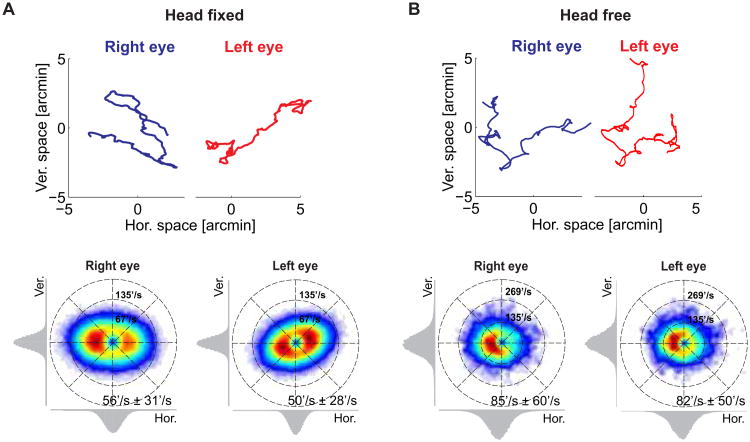Figure 1. Ocular drift characteristics.
The eyes move incessantly during visual fixation. (A) Eye movements measured under strict head immobilization, a common condition in oculomotor experiments. The subject maintained fixation on a small marker while head movements were prevented by means of a bite bar and head rest. (B) Eye movements (rotations of the eyes within the head) acquired during normal head-free fixation (see Supplementary Experimental Procedures and Figure S1). In both A and B:(Top) Examples of ocular drift traces in the two eyes. (Bottom) Probability distributions of ocular drift velocities. The two panels show data from the right and left eye for one observer. Marginal distributions for the vertical and horizontal velocity components are shown on the corresponding axes. Numbers represent means and standard deviations of the instantaneous speed.

